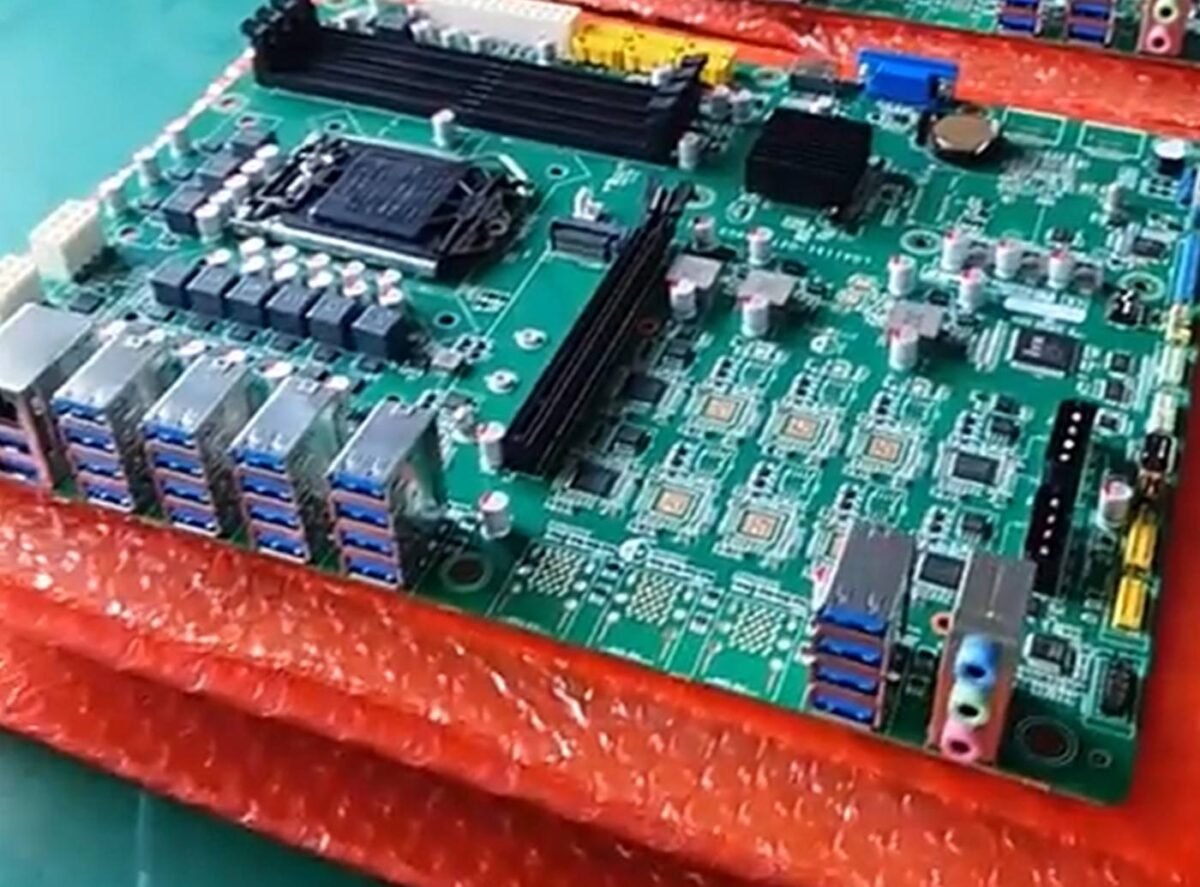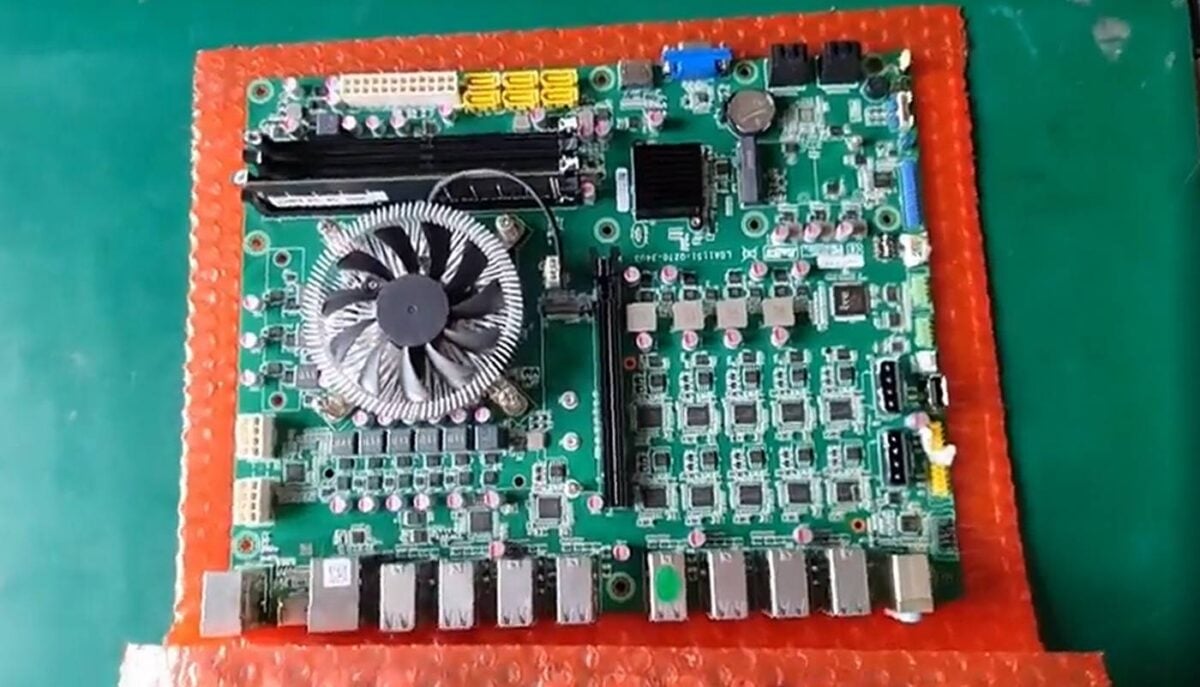A Redditor has shared a video of an unnamed motherboard sporting a colossal count of 36 USB Type-A ports. Targeting specific professional workloads, such as parallel firmware updates/installation and automated reliability/stress tests, this wild board will remain a simple curiosity for regular PC users. Well, unless you plan on plugging in every USB device you’ve ever owned.
The board seems to be based on the Intel LGA1151 platform, and it’s fitted with plenty of accompanying chips to drive and power the heaps of USB ports. From the looks of it, each quad-USB bank has its own controller, sitting where the PCIe and M.2 slots are generally located. Its design reminds me of the crypto days, when miners used specialised boards that passed PCIe lanes through USB cables to allow the installation of dozens of GPUs in the same system. The ASRock Z890 Taichi Aqua also has a set of 10 USB Type-C ports, but this custom board is in a different league.

With 36 USB ports on hand, even if you hook up a mouse, keyboard, headphone DAC, mic, webcam, capture card, printer, Wi-Fi dongle, game controller, plus anything lying around your desk, you will probably still have empty ports. And if for some reason you still need more, you can always plug in a bunch of USB hubs.
The good news is that the 127-device limit per controller shouldn’t be an issue, since each bank of USB ports seems to have its dedicated controller. For those unaware, a USB host controller is assigned a unique 7-bit address, which translates into 127 theoretical devices per controller. That said, the driver and operating system in general will start having problems before you hit this limit anyway, as demonstrated by Linus Tech Tips.

Depending on how each of these ports is configured, and the devices to be plugged into them, you may also need a strong PSU to power everything. USB can provide anywhere between 2.5W and 100W with USB 3.2 power delivery, so hooking up a lot of power-hungry devices can quickly increase your power needs. Looking at the dual Molex sockets conveniently located near the USB control chips, these ports should have access to a combined power output of at least 264W (132W at 12V per Molex socket), plus whatever the motherboard is supplying by default. All things considered, this doesn’t feel like much extra power.
Of course, this is a specialist motherboard made for certain tasks. Regular users won’t need this kind of design, especially since active-powered USB hubs can provide a scalable alternative. However, if you plan to distribute hundreds of USB sticks with data on them, as we saw when Gamers Nexus released its AI GPU Black Market investigation movie to its supporters, then it may be a reasonable investment.


